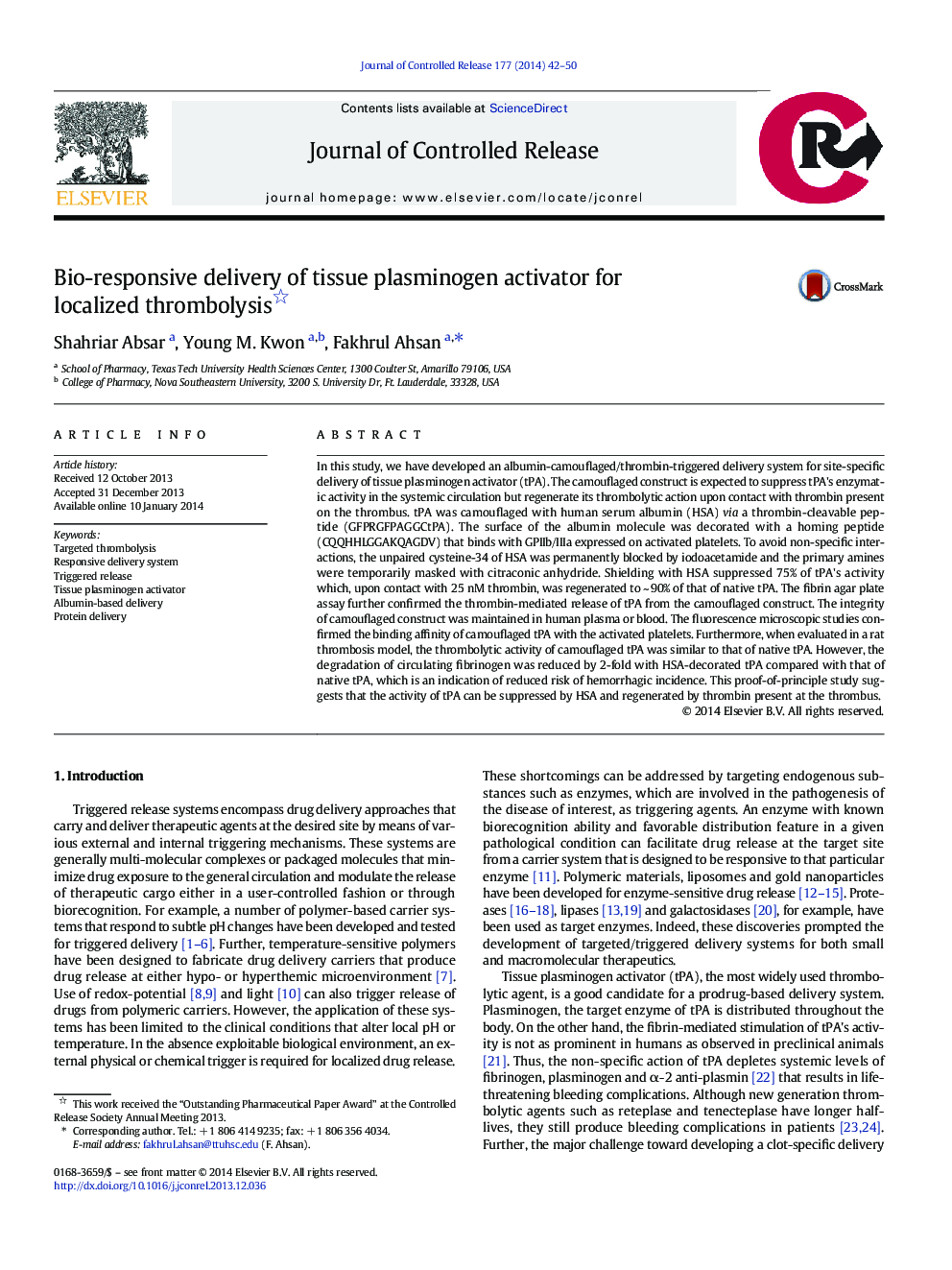| Article ID | Journal | Published Year | Pages | File Type |
|---|---|---|---|---|
| 1424091 | Journal of Controlled Release | 2014 | 9 Pages |
In this study, we have developed an albumin-camouflaged/thrombin-triggered delivery system for site-specific delivery of tissue plasminogen activator (tPA). The camouflaged construct is expected to suppress tPA's enzymatic activity in the systemic circulation but regenerate its thrombolytic action upon contact with thrombin present on the thrombus. tPA was camouflaged with human serum albumin (HSA) via a thrombin-cleavable peptide (GFPRGFPAGGCtPA). The surface of the albumin molecule was decorated with a homing peptide (CQQHHLGGAKQAGDV) that binds with GPIIb/IIIa expressed on activated platelets. To avoid non-specific interactions, the unpaired cysteine-34 of HSA was permanently blocked by iodoacetamide and the primary amines were temporarily masked with citraconic anhydride. Shielding with HSA suppressed 75% of tPA's activity which, upon contact with 25 nM thrombin, was regenerated to ~ 90% of that of native tPA. The fibrin agar plate assay further confirmed the thrombin-mediated release of tPA from the camouflaged construct. The integrity of camouflaged construct was maintained in human plasma or blood. The fluorescence microscopic studies confirmed the binding affinity of camouflaged tPA with the activated platelets. Furthermore, when evaluated in a rat thrombosis model, the thrombolytic activity of camouflaged tPA was similar to that of native tPA. However, the degradation of circulating fibrinogen was reduced by 2-fold with HSA-decorated tPA compared with that of native tPA, which is an indication of reduced risk of hemorrhagic incidence. This proof-of-principle study suggests that the activity of tPA can be suppressed by HSA and regenerated by thrombin present at the thrombus.
Graphical abstractFigure optionsDownload full-size imageDownload high-quality image (229 K)Download as PowerPoint slide
